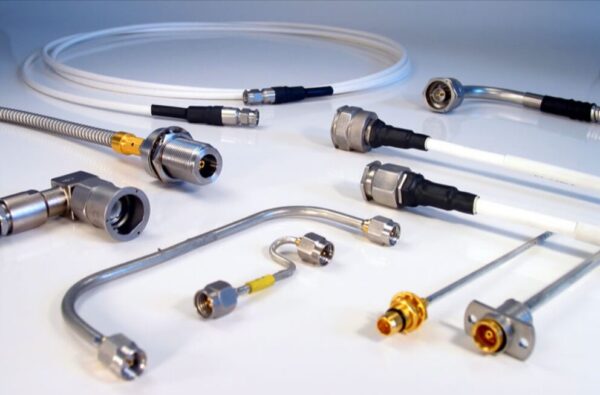Choosing the right RF/microwave cable assembly can be overwhelming. It is mostly due to the vast range of products and technical specifications available. Unlike simple product comparisons, many cables have unique performance characteristics that don’t always translate into an easy, side-by-side evaluation.
This guide is designed to help go beyond the spec sheet and make an informed decision based on real-world application needs and environmental considerations. Whether dealing with high frequency signals, power handling, or flexibility requirements, this guide will equip you with the knowledge to select the best cable for specific use case—quickly and confidently.
- Electrical Performance
The selection of microwave cable assemblies is influenced by various electrical properties. Such include operating frequency range, attenuation (loss), return loss/voltage standing-wave ratio (VSWR), and the shielding effectiveness of the outer conductor. It plays a crucial role in controlling crosstalk, spurious ingress, and noise levels.
Certain applications of microwave cables may also demand specific attention to phase stability versus flexure, phase stability versus temperature, and average and peak power levels. Additionally, phase matching and signal delay are important factors to consider.
- Attenuation and Reflection
Attenuation and signal reflection can severely impact high data rate transmissions. Insertion loss, which applies to the entire cable assembly, appears as a reduction in amplitude. The primary causes of insertion loss include the conductor, dielectric material, internal signal reflection within the connector/cable, and external radiation—with the cable itself contributing the most.
Return loss mainly results from impedance mismatches, leading to the formation of standing waves, which are measured as VSWR. In the worst case, if the reflected wave equals the incident wave but is 180 degrees out of phase, a perfect standing wave forms, preventing any signal from passing through.
Connectors are the most significant contributors to VSWR in a typical cable assembly. While the interface between the male and female sides of a mated connector is well understood and easily controlled, the interface between the connector and the cable itself presents a challenge.
This interface is often responsible for signal degradation, leading to performance variations among different brands. To achieve optimal VSWR performance, properly engineering the connector-to-cable transition is crucial.
- Operating Frequency
At low data rates, the primary concern is maintaining conductivity and minimizing signal loss over distance, as signal energy gradually dissipates through the cable. However, in high-data-rate or high-frequency transmission, the reliance on higher-order harmonic wave frequencies to maintain the square edges of the wave and the underlying physics of transmission quality introduce additional considerations in cable selection.
For instance, at 3 GHz and above, the dielectric material surrounding the copper center conductor must do more than just provide insulation—it also needs to support propagation velocity and loss characteristics that ensure signals travel without significant degradation.
- Environmental Factors
Key elements for cable selection include operating temperature, ambient humidity, and exposure to external elements like chemicals, fluids, sand, dust and UV radiation. The factors are vital in military and aerospace applications where cables may be set in harsh environments.
Additionally, it is vital to differentiate between stationary operation and continuous flexing, as movement can impact durability. Other environmental conditions like shock and vibration levels should also be factored into the selection process.
Choosing the Right Cable
Choosing the right cable for an application needs considering multiple electrical and environmental elements. Having an understanding of coaxial cable construction, RF connectors, attachment methods, key performance metrics, and trade-offs will help make a more informed and effective decision.




